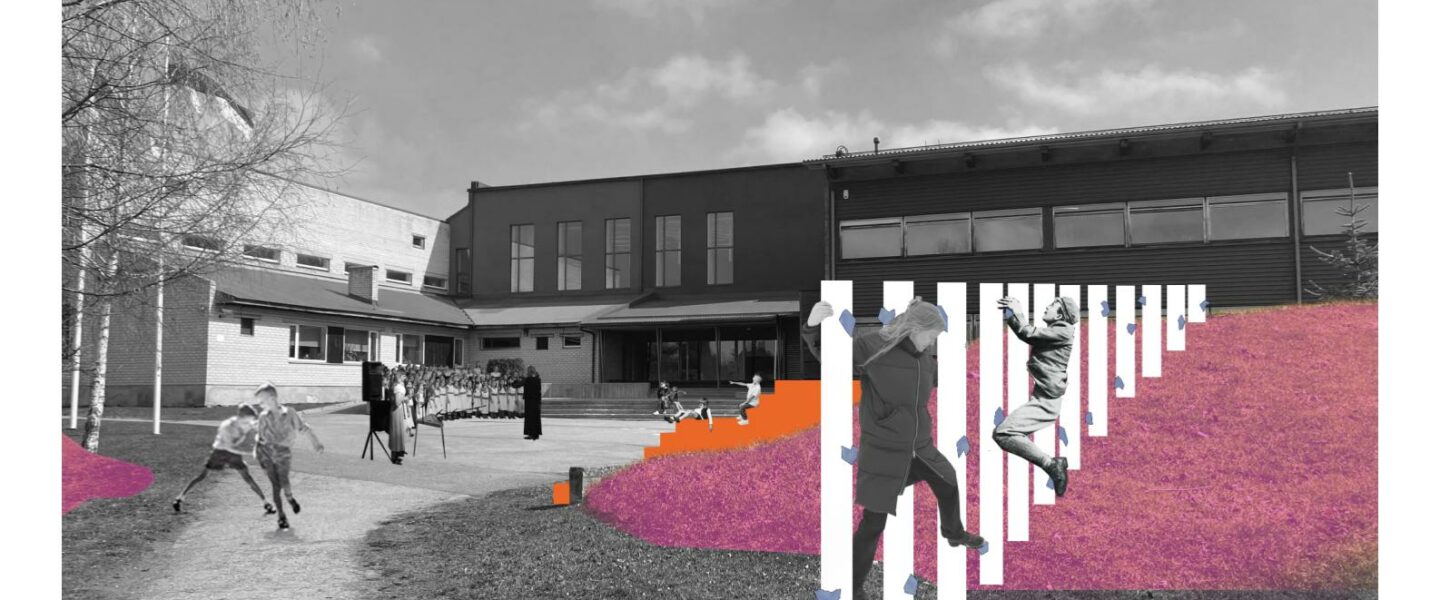
The educational landscape planned for Oru School. Authors Ella Mari Roosi and Julia Freudenberg.
In 2023, the landscape studio of the Faculty of Architecture of EKA studied the situation of outdoor education in Estonian schools. The purpose of the study was to find out the current state and possibilities of outdoor education and to make spatial proposals based on this. The studio was supervised by architect Katrin Koov.
In the online survey prepared for schools in the first phase of the study, we wanted to know if, where and how outdoor learning is done in Estonian schools and what is missed. 90 people from all 15 counties answered the survey (teachers, school principals, interest leaders, study leaders). .
With the help of students, a total of 105 schools, or about 1/5 of Estonian schools were investigated. The sample consisted of ten counties and a separate city of Tallinn. During the fieldwork, we collected information about the size, nature and use of schoolyards. Finally, we made an overview of the important problems and spatial possibilities for organizing outdoor education in each schoolyard.
The last part of the research was making spatial proposals to enable outdoor education in schools. When compiling the spatial program, we based the results of the survey and mapping. We chose nine schools of different sizes, locations and types as sample solutions. For them, the students prepared a detailed analysis and proposals for spatial solutions for the design of the landscape and educational facilities.
In their projects, the students pointed out the openness of outdoor areas to the community and urban space, their integration with the landscape, their flexibility and versatility, site-specificity and year-round use, accessibility and suitability for different age groups, playfulness and invitation to move, and planned the yards accordingly.
Outdoor learning will also be explored this academic year, 2023/2024. The goal is to keep outdoor learning open – treating it as a concept and planning it as a space. Just as the natural environment is constantly changing, so the outdoor learning environment can be interpreted and discovered in a new way every time: by learning, playing and moving.
Students participated in the study: Arabella Aabrams, Anabel Ainso, Anu Alver, Triinu Amboja, Julia Freudenberg, Darja Gužovskaja, Laura Haki, Janely Järv, Tuule Kangur, Kuido Karlson, Madis Arp Keerd, Roosmarii Kukk, Triinu Lamp, Paula Līva Lorence, Laura Susanna Lätte, Alis Mäesalu, Mattias Ots, Ella Mari Roosi, Erik Sammel, Tatjana Štšurikova, Helerin Talpsepp, Anneli Virts.
We thank Tartu Ülikooli Liikumislabor for the cooperation.
